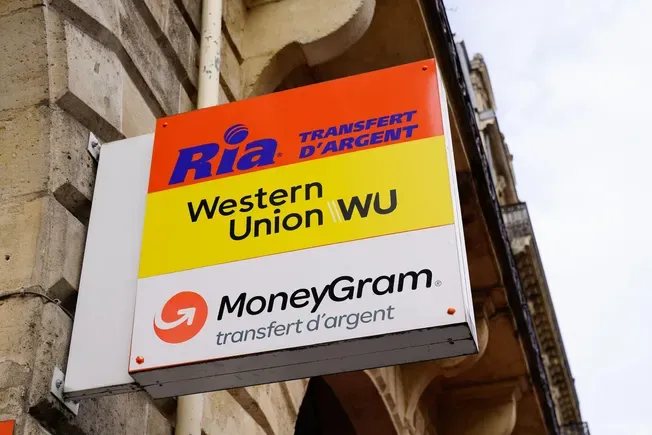Walmart is the largest employer in the United States, employing more than 2.3 million people worldwide and nearly 1.6 million in the United States. If you’re considering taking a job at Walmart, already work there, or simply want to know more about how the company treats its employees, you may be curious about the Walmart 401(k) plan.
In this article, we’ll share what Walmart’s 401(k) plan is, how much it contributes to its employee’s retirement accounts, and how you can invest your Walmart 401(k) balance.
What is Walmart’s 401(k) Plan?
Like most major corporations, Walmart offers a 401(k) plan to help its employees save for retirement. The company allows its employees to contribute up to 50% of their income to either a traditional or Roth 401(k) account, or a combination of the two up to their respective limits. Employees can start taking advantage of the 401(k) plan as soon as their date of hire is entered into the payroll system.
Walmart’s 401(k) plan has a variety of investment options to choose from.
Employees can choose between one of two tracks. They can choose the “one-choice” investment option, which is a target-date fund based on the year they expect to retire. Alternatively, employees can choose a mix of individual investment options. The investments available to choose from include:
- BlackRock Money Market Trust
- JPMorgan Short Term Bond Trust
- Bond Fund
- Real Assets Fund
- BlackRock Russell 1000 Index Trust
- Large Cap Equity Fund
- Small Mid Cap Equity Fund
- BlackRock Russell 2000 Index Trust
- International Equity Fund
Walmart’s 401(k) Contribution Matching
Like many companies, Walmart offers an employer contribution to help boost its employees’ retirement savings.
Walmart has a generous contribution match — It promises to match its employees’ 401(k) contributions dollar for dollar, up to 6% of their pre-tax income.
When compared to other companies, Walmart’s 6% contribution match really stands out. According to a 2020 study, the majority of companies offer a match between 3% and 5%, with the average match being 4.5% of income.
Walmart doesn’t just have a better 401(k) match than most companies. It also beats out some of its biggest competitors. For example, Target offers its employees a match of up to 5% of their income.
And Amazon’s employer match tops out at just 2% of an employee’s income.
Walmart also has an excellent vesting policy for its 401(k) plan. Many companies have an extended vesting schedule, meaning employees have to work at the company for a specific amount of time before they qualify for their employer match. But Walmart’s employees are immediately 100% vested in the 401(k) plan for both their contributions and the company match.
How Much Should You Contribute?
Walmart’s 401(k) plan allows employees to start contributing with as little as 1% of their salary and can contribute up to 50%. With such a wide range to choose from, how do you decide what the right contribution is?
First, try to contribute at least enough to take advantage of Walmart’s 6% employer match.
After all, it’s literally free money. If you contribute $3,000 to your 401(k) plan, Walmart will fully match that amount, as long as it doesn’t exceed 6% of your income. Think of it as a guaranteed 100% return on your investment.
Even though Walmart doesn’t match contributions above 6% of your pay, you may still want to contribute more. With your employer match, you’re essentially contributing 12% of your income to your 401(k) plan each year.
But depending on your situation, that may not be enough for a comfortable retirement.
The Personal Capital Retirement Planner can help you figure out how much you should be saving for retirement based on your current retirement savings and your desired income during retirement.
Remember, you can contribute up to $19,500 to your 401(k) plan each year. And if you’ve maxed out your 401(k) contributions, you can also contribute up to $6,000 to an individual retirement account (IRA). Depending on your income, you may be able to contribute to only a traditional IRA or either a traditional or Roth IRA.
How Should You Invest?
When you sign up for Walmart’s 401(k) plan, you’ll have a few decisions to make. First, you’ll have to decide whether to contribute to a traditional or Roth 401(k).
When you contribute to a traditional 401(k), you contribute with pre-tax dollars.
As a result, you reduce your taxable income — and therefore, your tax burden — for the current year. The money grows tax-deferred in your 401(k), and you’ll pay income taxes on the money you withdraw during retirement.
In the case of a Roth 401(k), on the other hand, you contribute with after-tax dollars. The downside is that you don’t reduce your taxable income with your contributions. However, the money grows tax-free in your account, and you can withdraw without paying taxes during retirement.
When it comes to choosing between traditional or Roth contributions, consider your income today and what you expect it to be in the future.
In general, a traditional 401(k) is better for people who expect their tax rate to be lower during retirement, while a Roth 401(k) is better for those who expect their tax rate to be higher during retirement.
Unfortunately, Walmart doesn’t currently offer Roth conversions. So if you change your mind later, you may have to utilize a Roth IRA later to convert your money.
The other decision you’ll have to make when you sign up is what you want to invest in. As we mentioned, you have two options: You can either invest in the offered target-date funds or choose your own funds.
There’s not necessarily one right answer. Instead, you’ll have to decide which option you’re more comfortable with.
The benefit of target-date funds is that they correspond to your retirement year and adjust their holdings as that year gets closer. You can simply make your contributions without having to worry about your investments.
And while the target-date fund is certainly more hands-off, that’s not the right approach for everyone. Some investors may prefer to choose their own investments, especially if they have a risk tolerance that’s different from most investors.
For example, you might have a high risk tolerance and decide you want a retirement portfolio of mostly stocks. On the other hand, you may be fairly risk-averse and decide you want more secure investments than the target-date fund primarily invests in.
The good news is that whichever option you choose, you aren’t locked in forever.
You can change your mind at any time.
What Happens to Your Old 401(k) If You Quit?
If you leave Walmart, you have a few different options for what to do with your 401(k) plan. First, you can likely leave the money where it is and let your investments continue to grow in Walmart’s 401(k) plan. You can’t make any additional contributions, nor will Walmart, but the money that’s in there will grow.
You can also choose to roll your 401(k) balance over into either a different 401(k) plan or an IRA. There are a few benefits to choosing one of these options.
First, rolling your money over into a different account allows you to keep all of your retirement savings in one place rather than keeping track of a 401(k) plan at each of your former employers.
And the benefit of rolling the money into an IRA is that you have more control over the investments. Instead of being able to choose from only a select list provided by an employer, you can choose to invest in anything.
Another option when you leave your job is to cash out your 401(k) and get a check for the full balance. While this is certainly an option, it’s not an advisable one. In addition to paying income taxes on the distribution, you’ll also pay a 10% penalty.
Additionally, that money will no longer grow with compound interest, and you’ll have less money to live on during retirement.
Can You Roll Over an Old 401(k)?
If you have a 401(k) with a previous employer, you can roll it over into your Walmart retirement account. The rollover process is simple and is handled entirely by the plan administrator. To set up a rollover, call Merrill Lynch Customer Service at 888-968-4015.
Next Steps for You
Preparing for retirement is part of your overall financial plan. You can take a few actions now to get yourself on the right track.
- Download 65 Ways to Retire Smart, an actionable guide with insights from fiduciary financial advisors.
The guide is free.
- Sign up for the Personal Capital Dashboard. Millions of people use these free and secure online financial tools to see all of their accounts in one place and plan for long-term goals, like saving for retirement.
- Consider talking to a fiduciary financial advisor for more detailed guidance on your retirement saving strategies.
Get Started with Personal Capital
Author is not a client of Personal Capital Advisors Corporation and is compensated as a freelance writer.
Personal Capital compensates Erin Gobler (“Author”) for providing the content contained in this blog post. Author is not an advisory client. The content contained in this blog post is intended for general informational purposes only and is not meant to constitute legal, tax, accounting or investment advice.
Compensation not to exceed $500. You should consult a qualified legal or tax professional regarding your specific situation. Keep in mind that investing involves risk. The value of your investment will fluctuate over time and you may gain or lose money.
Third party data is obtained from sources believed to be reliable; however, Personal Capital Corporation (“PCC”) cannot guarantee the accuracy, timeliness, completeness or fitness of this data for any particular purpose. Third party links are provided solely as a convenience and do not imply an affiliation, endorsement or approval by Personal Capital of the contents on such third party websites.
Original Article






